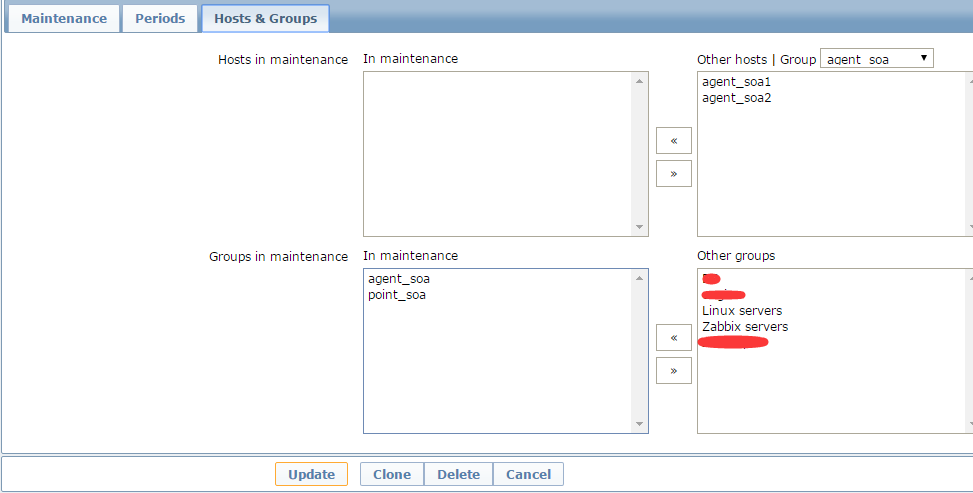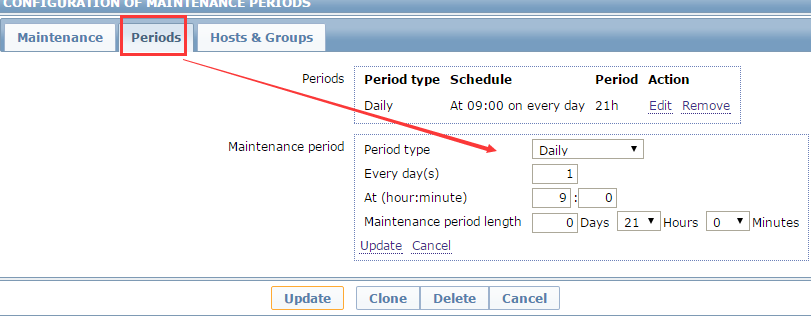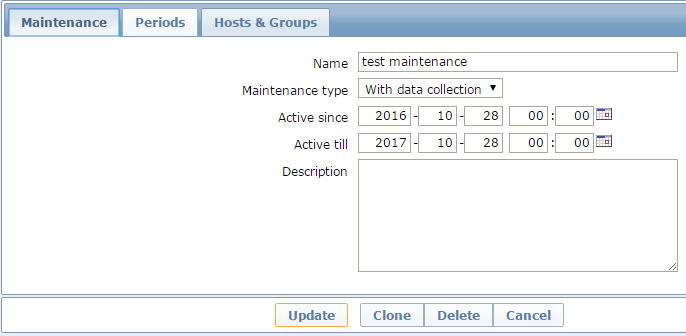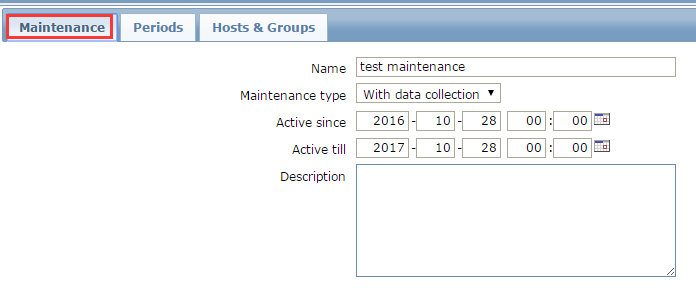利用zabbix的API功能可以方便地通過其他程序調用zabbix,從而實現靈活的擴展Zabbix方式。
一、zabbixAPI簡介
Zabbix的API具有重要的功能,爲第三方調用zabbix、批量操作提供可編程接口,從而輕鬆地用於自己的業務系統,將zabbix監控系統與運維繫統相集成。zabbix API是基於前端HTTP協議實現的,也就是可以通過HTTP請求實現的API,數據傳輸採用JSON RPC協議。
JSON-RPC是基於JSON的跨語言遠程調用協議,比XML-RPC、Webservice等基於文本的協議傳輸數據量要小;相比Hessian、java-RPC等二進制協議更便於調試、實現、擴展、是非常優秀的一種遠程調用協議。目前主流語言都已有JSON-RPC的實現框架,java語言中較好的JSON-RPC實現框架有jsonrpc4j、Jproxy、JSON-RPC,其中jsonrpc4j既可以獨立使用,又可以與Spring無縫結合,比較適合用於基於Spring的項目開發
二、zabbix API的簡單使用
zabbix api相關:官方文檔:https://www.zabbix.com/documentation/2.4/manual/api/
1、使用user.login方法
params後面的用戶名和密碼是zabbix的web界面登錄名和密碼!!!
#curl -i -X POST -H 'Content-Type:application/json' -d '{"jsonrpc": "2.0","method":"user.login","params":{"user":"admin","password":"密碼xxx"},"auth": null,"id":0}' http://10.0.18.12/zabbix/api_jsonrpc.php
HTTP/1.1 200 OK
Date: Mon, 24 Oct 2016 10:33:34 GMT
Server: Apache/2.2.15 (CentOS)
X-Powered-By: PHP/5.3.3
Access-Control-Allow-Origin: *
Access-Control-Allow-Headers: Content-Type
Access-Control-Allow-Methods: POST
Access-Control-Max-Age: 1000
Content-Length: 68
Connection: close
Content-Type: application/json
{"jsonrpc":"2.0","result":"a21db81b19908971f9a8518b5092b414","id":0}
執行OK:
到zabbix庫中查看session
mysql> select * from zabbix.sessions;
+----------------------------------+--------+------------+--------+
| sessionid | userid | lastaccess | status |
+----------------------------------+--------+------------+--------+
| 0123b9ec3295562c23a13bc87e8f8b28 | 1 | 1457432079 | 0 |
| 0b13dce7637ea03667b2cae9199db559 | 2 | 1477302663 | 0 |
| 0e2ef1a01dca95bc23171d314d82f1c8 | 1 | 1469440342 | 0 |
| 1a6439ab2bcdd6e6a4dd549e02a09173 | 1 | 1473418801 | 0 |
| 294643838565c4b2c57902c06f0e6e12 | 2 | 1477302700 | 0 |
| 4062d9f3a89a14f734ea73299130a19f | 1 | 1465352471 | 0 |
| 5d14d651069a95c30f313753dfdcd541 | 1 | 1477304346 | 0 |
| 5f2cbe9a9c406f1053ffe8fd7c98e376 | 1 | 1477302828 | 1 |
| 750f97a0b59b00f8ea1a2af05e52c7c8 | 1 | 1464612638 | 0 |
| 910945f4f8ba5b27489c963e73619039 | 1 | 1477363990 | 0 |
| 925832711e34d009245232da998d9382 | 1 | 1453813826 | 0 |
| 986a8661ecab7676fd8716da60c1f9f0 | 1 | 1477375294 | 0 |
| a1d15429a29ae56e8a347647ba600d51 | 1 | 1453814055 | 0 |
| a21db81b19908971f9a8518b5092b414 | 1 | 1477305214 | 0 | ##可以看到了
| a43e362ed8268af31d8b15c8d3234acb | 1 | 1476275454 | 0 |
| b29b878a0868f344896b78f5cf843a5c | 2 | 1477302723 | 0 |
| b55a3b569c95b9158ec5bf67b8c4870f | 1 | 1476434671 | 0 |
| c4703a34d0afe9130cbb921995ad4f7e | 1 | 1473669065 | 0 |
| db2111abc2e6d96f6baaaa5089a538c1 | 1 | 1453962136 | 0 |
+----------------------------------+--------+------------+--------+
19 rows in set (0.00 sec)
2、使用host.get方法
這裏host留空,表示查看所有的
#curl -i -X POST -H 'Content-Type:application/json' -d '{"jsonrpc": "2.0","method":"host.get","params":{"output":"hostid","selectGroups":"extend","filter":{"host":""}},"auth":"a21db81b19908971f9a8518b5092b414","id":1}' http://10.0.18.12/zabbix/api_jsonrpc.php
HTTP/1.1 200 OK
Date: Tue, 25 Oct 2016 06:49:20 GMT
Server: Apache/2.2.15 (CentOS)
X-Powered-By: PHP/5.3.3
Access-Control-Allow-Origin: *
Access-Control-Allow-Headers: Content-Type
Access-Control-Allow-Methods: POST
Access-Control-Max-Age: 1000
Connection: close
Transfer-Encoding: chunked
Content-Type: application/json
{"jsonrpc":"2.0","result":[{"hostid":"10084","groups":[{"groupid":"4","name":"Zabbix servers","internal":"0","flags":"0"}]},{"hostid":"10105","groups":[{"groupid":"2","name":"Linux servers","internal":"0","flags":"0"}]},{"hostid":"10106","groups":
………………………… 太多了
…………………………
查看Linux servers組,如下:
#curl -i -X POST -H 'Content-Type:application/json' -d '{"jsonrpc": "2.0","method":"host.get","params":{"output":"extend","filter":{"host":"Linux servers"}},"auth":"a21db81b19908971f9a8518b5092b414","id":1}' http://10.0.18.12/zabbix/api_jsonrpc.php
HTTP/1.1 200 OK
Date: Tue, 25 Oct 2016 06:27:19 GMT
Server: Apache/2.2.15 (CentOS)
X-Powered-By: PHP/5.3.3
Access-Control-Allow-Origin: *
Access-Control-Allow-Headers: Content-Type
Access-Control-Allow-Methods: POST
Access-Control-Max-Age: 1000
Content-Length: 36
Connection: close
Content-Type: application/json
{"jsonrpc":"2.0","result":[],"id":1}3、查看zabbix監控的hosts,這裏有一個腳本
#cat zabbixgethost.py
#!/usr/bin/env python
#coding=utf-8
#導入模塊,urllib2是一個模擬瀏覽器HTTP方法的模塊
import json
import urllib2
import sys
from urllib2 import Request, urlopen, URLError, HTTPError
#url and url header
#zabbix的api 地址,用戶名,密碼,這裏修改爲自己實際的參數
zabbix_url="http://10.0.18.12/zabbix/api_jsonrpc.php" #10.0.18.12是我自己的zabbix serverip
zabbix_header = {"Content-Type":"application/json"}
zabbix_user = "admin" #web界面進入zabbix的用戶名
zabbix_pass = "xxxx" #web界面進入zabbix的密碼
auth_code = ""
#auth user and password
#用戶認證信息的部分,最終的目的是得到一個SESSIONID
#這裏是生成一個json格式的數據,用戶名和密碼
auth_data = json.dumps(
{
"jsonrpc":"2.0",
"method":"user.login",
"params":
{
"user":zabbix_user,
"password":zabbix_pass
},
"id":0
})
# create request object
request = urllib2.Request(zabbix_url,auth_data)
for key in zabbix_header:
request.add_header(key,zabbix_header[key])
#auth and get authid
try:
result = urllib2.urlopen(request)
#對於出錯新的處理
except HTTPError, e:
print 'The server couldn\'t fulfill the request, Error code: ', e.code
except URLError, e:
print 'We failed to reach a server.Reason: ', e.reason
else:
response=json.loads(result.read())
result.close()
#判斷SESSIONID是否在返回的數據中
if 'result' in response:
auth_code=response['result']
else:
print response['error']['data']
# request json
json_data={
"method":"host.get",
"params":{
"output": "extend",
}
}
json_base={
"jsonrpc":"2.0",
"auth":auth_code,
"id":1
}
json_data.update(json_base)
#用得到的SESSIONID去通過驗證,獲取主機的信息(用http.get方法)
if len(auth_code) == 0:
sys.exit(1)
if len(auth_code) != 0:
get_host_data = json.dumps(json_data)
# create request object
request = urllib2.Request(zabbix_url,get_host_data)
for key in zabbix_header:
request.add_header(key,zabbix_header[key])
# get host list
try:
result = urllib2.urlopen(request)
except URLError as e:
if hasattr(e, 'reason'):
print 'We failed to reach a server.'
print 'Reason: ', e.reason
elif hasattr(e, 'code'):
print 'The server could not fulfill the request.'
print 'Error code: ', e.code
else:
response = json.loads(result.read())
result.close()
#將所有的主機信息顯示出來
print response
#顯示主機的個數
print "Number Of Hosts: ", len(response['result'])
執行:
#python zabbixgethost.py
{u'jsonrpc': u'2.0', u'result': [{u'available': u'1', u'maintenance_type': u'0', u'ipmi_errors_from': u'0', u'ipmi_username': u'', u'snmp_disable_until': u'0', u'ipmi_authtype': u'-1', u'ipmi_disable_until':
…………………… 省略
'10267', u'name': u'datainsight_backstage1', u'jmx_errors_from': u'0', u'jmx_disable_until': u'0', u'flags': u'0', u'error': u'', u'maintenance_from': u'0', u'errors_from': u'0'}], u'id': 1}
Number Of Hosts: 160
一共有160臺主機!4、使用api批量添加新主機
腳本如下:
#cat zabbixhostcreate.py
#!/usr/bin/env python
#coding=utf-8
#導入模塊,urllib2是一個模擬瀏覽器HTTP方法的模塊
import json
import urllib2
import sys
from urllib2 import Request, urlopen, URLError, HTTPError
#url and url header
#zabbix的api 地址,用戶名,密碼,這裏修改爲自己實際的參數
zabbix_url="http://10.0.18.12/zabbix/api_jsonrpc.php"
zabbix_header = {"Content-Type":"application/json"}
zabbix_user = "admin"
zabbix_pass = "xxxx"
auth_code = ""
#auth user and password
#用戶認證信息的部分,最終的目的是得到一個SESSIONID
#這裏是生成一個json格式的數據,用戶名和密碼
auth_data = json.dumps(
{
"jsonrpc":"2.0",
"method":"user.login",
"params":
{
"user":zabbix_user,
"password":zabbix_pass
},
"id":0
})
# create request object
request = urllib2.Request(zabbix_url,auth_data)
for key in zabbix_header:
request.add_header(key,zabbix_header[key])
#auth and get authid
try:
result = urllib2.urlopen(request)
#對於出錯新的處理
except HTTPError, e:
print 'The server couldn\'t fulfill the request, Error code: ', e.code
except URLError, e:
print 'We failed to reach a server.Reason: ', e.reason
else:
response=json.loads(result.read())
result.close()
#判斷SESSIONID是否在返回的數據中
if 'result' in response:
auth_code=response['result']
else:
print response['error']['data']
# request json
json_data={
"method": "host.create",
"params": {
"host": "", #新主機hostname,這裏留空爲了批量添加
"interfaces": [
{
"type": 1,
"main": 1,
"useip": 1,
"ip": "", #新主機ip地址,這裏留空爲了批量添加
"dns": "",
"port": "10050" #zabbix client 端口
}
],
"groups": [
{
"groupid": "2" #組id
}
],
"templates": [
{
"templateid": "10001" #模板id
}
],
"inventory": {
"macaddress_a": "",
"macaddress_b": ""
}
}
}
json_base={
"jsonrpc":"2.0",
"auth":auth_code,
"id":1
}
json_data.update(json_base)
print json_data
#用得到的SESSIONID去通過驗證,獲取主機的信息(用http.get方法)
with open("serverlist.txt") as f: #這裏是一個從serverlist獲取新hosts的hostname和ip的方法
data=f.readlines()
f.close()
for line in data:
host,ip=line.split()
json_data['params']['host']=host
json_data['params']['interfaces'][0]['ip']=ip
print json_data #到這裏結束
if len(auth_code) == 0:
sys.exit(1)
if len(auth_code) != 0:
get_host_data = json.dumps(json_data)
# create request object
request = urllib2.Request(zabbix_url,get_host_data)
for key in zabbix_header:
request.add_header(key,zabbix_header[key])
# get host list
try:
result = urllib2.urlopen(request)
except URLError as e:
if hasattr(e, 'reason'):
print 'We failed to reach a server.'
print 'Reason: ', e.reason
elif hasattr(e, 'code'):
print 'The server could not fulfill the request.'
print 'Error code: ', e.code
else:
response = json.loads(result.read())
result.close()
#將所有的主機信息顯示出來
print response
#顯示主機的個數
print "Number Of Hosts: ", len(response['result'])
開始批量添加
#cat serverlist.txt #將需要加入監控的新主機按照如下格式寫入serverlist文件中
point_soa1 10.1.12.177
point_soa2 10.1.12.178
執行:
#python zabbixhostcreate.py
{'jsonrpc': '2.0', 'params': {'templates': [{'templateid': '10001'}], 'host': '', 'interfaces': [{'ip': '', 'useip': 1, 'dns': '', 'main': 1, 'type': 1, 'port': '10050'}], 'groups': [{'groupid': '2'}], 'inventory': {'macaddress_b': '', 'macaddress_a': ''}}, 'method': 'host.create', 'auth': u'550390eace5ebcd60168d791c38b4f0d', 'id': 1}
{'jsonrpc': '2.0', 'params': {'templates': [{'templateid': '10001'}], 'host': 'point_soa1', 'interfaces': [{'ip': '10.1.12.177', 'useip': 1, 'dns': '', 'main': 1, 'type': 1, 'port': '10050'}], 'groups': [{'groupid': '2'}], 'inventory': {'macaddress_b': '', 'macaddress_a': ''}}, 'method': 'host.create', 'auth': u'550390eace5ebcd60168d791c38b4f0d', 'id': 1}
{u'jsonrpc': u'2.0', u'result': {u'hostids': [u'10289']}, u'id': 1}
Number Of Hosts: 1
{'jsonrpc': '2.0', 'params': {'templates': [{'templateid': '10001'}], 'host': 'point_soa2', 'interfaces': [{'ip': '10.1.12.178', 'useip': 1, 'dns': '', 'main': 1, 'type': 1, 'port': '10050'}], 'groups': [{'groupid': '2'}], 'inventory': {'macaddress_b': '', 'macaddress_a': ''}}, 'method': 'host.create', 'auth': u'550390eace5ebcd60168d791c38b4f0d', 'id': 1}
{u'jsonrpc': u'2.0', u'result': {u'hostids': [u'10290']}, u'id': 1}
Number Of Hosts: 1
可以看到一共添加了2臺host!到zabbix的web界面查看,是添加成功的!但是以上的批量添加的腳本只能實現添加一個模板,即Template OS Linux (id爲10001)這個基本模板,如果想添加2個後者多個模板,需要使用下面這個改動過的腳本,如下:
#cat zabbixhostcreate2.py
#!/usr/bin/env python
#coding=utf-8
#導入模塊,urllib2是一個模擬瀏覽器HTTP方法的模塊
import json
import urllib2
import sys
from urllib2 import Request, urlopen, URLError, HTTPError
#url and url header
#zabbix的api 地址,用戶名,密碼,這裏修改爲自己實際的參數
zabbix_url="http://10.0.18.12/zabbix/api_jsonrpc.php"
zabbix_header = {"Content-Type":"application/json"}
zabbix_user = "admin"
zabbix_pass = "xxxx"
auth_code = ""
#auth user and password
#用戶認證信息的部分,最終的目的是得到一個SESSIONID
#這裏是生成一個json格式的數據,用戶名和密碼
auth_data = json.dumps(
{
"jsonrpc":"2.0",
"method":"user.login",
"params":
{
"user":zabbix_user,
"password":zabbix_pass
},
"id":0
})
# create request object
request = urllib2.Request(zabbix_url,auth_data)
for key in zabbix_header:
request.add_header(key,zabbix_header[key])
#auth and get authid
try:
result = urllib2.urlopen(request)
#對於出錯新的處理
except HTTPError, e:
print 'The server couldn\'t fulfill the request, Error code: ', e.code
except URLError, e:
print 'We failed to reach a server.Reason: ', e.reason
else:
response=json.loads(result.read())
result.close()
#判斷SESSIONID是否在返回的數據中
if 'result' in response:
auth_code=response['result']
else:
print response['error']['data']
# request json
template_list=["10001","10107"] #定義list,寫入模板id
json_data={
"method": "host.create",
"params": {
"host": "",
"interfaces": [
{
"type": 1,
"main": 1,
"useip": 1,
"ip": "",
"dns": "",
"port": "10050"
}
],
"groups": [
{
"groupid": "2"
}
],
"templates": template_list, #由之前的改爲了list格式
"inventory": {
"macaddress_a": "",
"macaddress_b": ""
}
}
}
json_base={
"jsonrpc":"2.0",
"auth":auth_code,
"id":1
}
json_data.update(json_base)
print json_data
#用得到的SESSIONID去通過驗證,獲取主機的信息(用http.get方法)
with open("serverlist.txt") as f:
data=f.readlines()
f.close()
for line in data:
host,ip=line.split()
json_data['params']['host']=host
json_data['params']['interfaces'][0]['ip']=ip
print json_data
if len(auth_code) == 0:
sys.exit(1)
if len(auth_code) != 0:
get_host_data = json.dumps(json_data)
# create request object
request = urllib2.Request(zabbix_url,get_host_data)
for key in zabbix_header:
request.add_header(key,zabbix_header[key])
# get host list
try:
result = urllib2.urlopen(request)
except URLError as e:
if hasattr(e, 'reason'):
print 'We failed to reach a server.'
print 'Reason: ', e.reason
elif hasattr(e, 'code'):
print 'The server could not fulfill the request.'
print 'Error code: ', e.code
else:
response = json.loads(result.read())
result.close()
#將所有的主機信息顯示出來
print response
#顯示主機的個數
print "Number Of Hosts: ", len(response['result'])
執行腳本如下:
#cat serverlist.txt
cmk_bs1 10.1.12.210
cmk_bs2 10.1.12.211
cmk_soa2 10.1.12.209
開始執行:
#python zabbixhostcreate2.py
{'jsonrpc': '2.0', 'params': {'templates': [{'templateid': '10001'}], 'host': '', 'interfaces': [{'ip': '', 'useip': 1, 'dns': '', 'main': 1, 'type': 1, 'port': '10050'}], 'groups': [{'groupid': '2'}], 'inventory': {'macaddress_b': '', 'macaddress_a': ''}}, 'method': 'host.create', 'auth': u'550390eace5ebcd60168d791c38b4f0d', 'id': 1}
{'jsonrpc': '2.0', 'params': {'templates': ['10001', '10107'], 'host': 'cmk_bs1', 'interfaces': [{'ip': '10.1.12.210', 'useip': 1, 'dns': '', 'main': 1, 'type': 1, 'port': '10050'}], 'groups': [{'groupid': '2'}], 'inventory': {'macaddress_b': '', 'macaddress_a': ''}}, 'method': 'host.create', 'auth': u'60341ac795bc16de28993f0ce5ad7ee6', 'id': 1}
{u'jsonrpc': u'2.0', u'result': {u'hostids': [u'10286']}, u'id': 1}
Number Of Hosts: 1
{'jsonrpc': '2.0', 'params': {'templates': ['10001', '10107'], 'host': 'cmk_bs2', 'interfaces': [{'ip': '10.1.12.211', 'useip': 1, 'dns': '', 'main': 1, 'type': 1, 'port': '10050'}], 'groups': [{'groupid': '2'}], 'inventory': {'macaddress_b': '', 'macaddress_a': ''}}, 'method': 'host.create', 'auth': u'60341ac795bc16de28993f0ce5ad7ee6', 'id': 1}
{u'jsonrpc': u'2.0', u'result': {u'hostids': [u'10287']}, u'id': 1}
Number Of Hosts: 1
{'jsonrpc': '2.0', 'params': {'templates': ['10001', '10107'], 'host': 'cmk_soa2', 'interfaces': [{'ip': '10.1.12.209', 'useip': 1, 'dns': '', 'main': 1, 'type': 1, 'port': '10050'}], 'groups': [{'groupid': '2'}], 'inventory': {'macaddress_b': '', 'macaddress_a': ''}}, 'method': 'host.create', 'auth': u'60341ac795bc16de28993f0ce5ad7ee6', 'id': 1}
{u'jsonrpc': u'2.0', u'result': {u'hostids': [u'10288']}, u'id': 1}
Number Of Hosts: 1
添加了3臺主機,並且爲每臺主機添加了2個模板!5、批量刪除host
腳本如下:
#cat zabbixhostdelete.py
#!/usr/bin/env python
#coding=utf-8
#導入模塊,urllib2是一個模擬瀏覽器HTTP方法的模塊
import json
import urllib2
import sys
from urllib2 import Request, urlopen, URLError, HTTPError
#url and url header
#zabbix的api 地址,用戶名,密碼,這裏修改爲自己實際的參數
zabbix_url="http://10.0.18.12/zabbix/api_jsonrpc.php"
zabbix_header = {"Content-Type":"application/json"}
zabbix_user = "admin"
zabbix_pass = "xxxx"
auth_code = ""
#auth user and password
#用戶認證信息的部分,最終的目的是得到一個SESSIONID
#這裏是生成一個json格式的數據,用戶名和密碼
auth_data = json.dumps(
{
"jsonrpc":"2.0",
"method":"user.login",
"params":
{
"user":zabbix_user,
"password":zabbix_pass
},
"id":0
})
# create request object
request = urllib2.Request(zabbix_url,auth_data)
for key in zabbix_header:
request.add_header(key,zabbix_header[key])
#auth and get authid
try:
result = urllib2.urlopen(request)
#對於出錯新的處理
except HTTPError, e:
print 'The server couldn\'t fulfill the request, Error code: ', e.code
except URLError, e:
print 'We failed to reach a server.Reason: ', e.reason
else:
response=json.loads(result.read())
result.close()
#判斷SESSIONID是否在返回的數據中
if 'result' in response:
auth_code=response['result']
else:
print response['error']['data']
# request json
json_data={
"method":"host.delete",
"params":[''] #留空是爲了批量刪除
}
json_base={
"jsonrpc":"2.0",
"auth":auth_code,
"id":1
}
json_data.update(json_base)
#用得到的SESSIONID去通過驗證,獲取主機的信息(用http.get方法)
with open("deletelist.txt") as f: #刪除列表從deletelist中獲取
data=f.readlines()
f.close()
for line in data:
id=line.split()
json_data['params']=id
print json_data #到此結束
if len(auth_code) == 0:
sys.exit(1)
if len(auth_code) != 0:
get_host_data = json.dumps(json_data)
# create request object
request = urllib2.Request(zabbix_url,get_host_data)
for key in zabbix_header:
request.add_header(key,zabbix_header[key])
# get host list
try:
result = urllib2.urlopen(request)
except URLError as e:
if hasattr(e, 'reason'):
print 'We failed to reach a server.'
print 'Reason: ', e.reason
elif hasattr(e, 'code'):
print 'The server could not fulfill the request.'
print 'Error code: ', e.code
else:
response = json.loads(result.read())
result.close()
#將所有的主機信息顯示出來
print response
#顯示主機的個數
print "Number Of Hosts: ", len(response['result'])
批量刪除:
mysql> select hostid,host from hosts where host='point_soa1';
+--------+------------+
| hostid | host |
+--------+------------+
| 10292 | point_soa1 |
+--------+------------+
1 row in set (0.00 sec)
mysql> select hostid,host from hosts where host='point_soa2';
+--------+------------+
| hostid | host |
+--------+------------+
| 10290 | point_soa2 |
+--------+------------+
1 row in set (0.00 sec)
將查到的hostid寫入到deletelist.txt中,如下:
#cat deletelist.txt
10290
10292
執行腳本
#python zabbixhostdelete.py
{'jsonrpc': '2.0', 'params': ['10290'], 'method': 'host.delete', 'auth': u'f844af3cbbd2546410ab8ae8c441cfe1', 'id': 1}
{u'jsonrpc': u'2.0', u'result': {u'hostids': [u'10290']}, u'id': 1}
Number Of Hosts: 1
{'jsonrpc': '2.0', 'params': ['10292'], 'method': 'host.delete', 'auth': u'f844af3cbbd2546410ab8ae8c441cfe1', 'id': 1}
{u'jsonrpc': u'2.0', u'result': {u'hostids': [u'10292']}, u'id': 1}
Number Of Hosts: 1
刪除2個host!到zabbix的web界面查看,是刪除成功的!也可以改成如下:
#!/usr/bin/env python
#coding=utf-8
#導入模塊,urllib2是一個模擬瀏覽器HTTP方法的模塊
import json
import urllib2
import sys
from urllib2 import Request, urlopen, URLError, HTTPError
#url and url header
#zabbix的api 地址,用戶名,密碼,這裏修改爲自己實際的參數
zabbix_url="http://10.0.18.12/zabbix/api_jsonrpc.php"
zabbix_header = {"Content-Type":"application/json"}
zabbix_user = "admin"
zabbix_pass = "xxxx"
auth_code = ""
#auth user and password
#用戶認證信息的部分,最終的目的是得到一個SESSIONID
#這裏是生成一個json格式的數據,用戶名和密碼
auth_data = json.dumps(
{
"jsonrpc":"2.0",
"method":"user.login",
"params":
{
"user":zabbix_user,
"password":zabbix_pass
},
"id":0
})
# create request object
request = urllib2.Request(zabbix_url,auth_data)
for key in zabbix_header:
request.add_header(key,zabbix_header[key])
#auth and get authid
try:
result = urllib2.urlopen(request)
#對於出錯新的處理
except HTTPError, e:
print 'The server couldn\'t fulfill the request, Error code: ', e.code
except URLError, e:
print 'We failed to reach a server.Reason: ', e.reason
else:
response=json.loads(result.read())
result.close()
#判斷SESSIONID是否在返回的數據中
if 'result' in response:
auth_code=response['result']
else:
print response['error']['data']
# request json
json_data={
"method":"host.delete",
"params":[] #改成這樣
}
json_base={
"jsonrpc":"2.0",
"auth":auth_code,
"id":1
}
json_data.update(json_base)
#用得到的SESSIONID去通過驗證,獲取主機的信息(用http.get方法)
with open("deletelist.txt") as f: #改成這樣
data=f.readlines()
f.close()
for line in data:
json_data['params'].append(line)
print json_data #結束
if len(auth_code) == 0:
sys.exit(1)
if len(auth_code) != 0:
get_host_data = json.dumps(json_data)
# create request object
request = urllib2.Request(zabbix_url,get_host_data)
for key in zabbix_header:
request.add_header(key,zabbix_header[key])
# get host list
try:
result = urllib2.urlopen(request)
except URLError as e:
if hasattr(e, 'reason'):
print 'We failed to reach a server.'
print 'Reason: ', e.reason
elif hasattr(e, 'code'):
print 'The server could not fulfill the request.'
print 'Error code: ', e.code
else:
response = json.loads(result.read())
result.close()
#將所有的主機信息顯示出來
print response
#顯示主機的個數
print "Number Of Hosts: ", len(response['result'])三、zabbix API 創建維護模式
在某些時候,監控的主機進行代碼迭代,重啓端口,就會經常報警,這個時候報警就成了負擔,如果一次做很多臺server的升級,一直髮郵件很煩人,所以沒必要再發郵件了,如果將這些主機自動進入維護模式,那就不用收到那麼多報警郵件了。
1、以組爲單位進入維護模式
簡單來說就是假如有10臺server需要發佈升級代碼,這10臺server屬於一個組server1,那麼就可以將server1組添加到維護狀態,就不會收到報警郵件了,腳本代碼如下:
#cat zabbixaddmaintenance.py
#!/usr/bin/env python
#coding=utf-8
#導入模塊,urllib2是一個模擬瀏覽器HTTP方法的模塊
import json
import urllib2
import sys
from urllib2 import Request, urlopen, URLError, HTTPError
#url and url header
#zabbix的api 地址,用戶名,密碼,這裏修改爲自己實際的參數
zabbix_url="http://10.0.18.12/zabbix/api_jsonrpc.php"
zabbix_header = {"Content-Type":"application/json"}
zabbix_user = "admin"
zabbix_pass = "xxxx"
auth_code = ""
#auth user and password
#用戶認證信息的部分,最終的目的是得到一個SESSIONID
#這裏是生成一個json格式的數據,用戶名和密碼
auth_data = json.dumps(
{
"jsonrpc":"2.0",
"method":"user.login",
"params":
{
"user":zabbix_user,
"password":zabbix_pass
},
"id":0
})
# create request object
request = urllib2.Request(zabbix_url,auth_data)
for key in zabbix_header:
request.add_header(key,zabbix_header[key])
#auth and get authid
try:
result = urllib2.urlopen(request)
#對於出錯新的處理
except HTTPError, e:
print 'The server couldn\'t fulfill the request, Error code: ', e.code
except URLError, e:
print 'We failed to reach a server.Reason: ', e.reason
else:
response=json.loads(result.read())
result.close()
#判斷SESSIONID是否在返回的數據中
if 'result' in response:
auth_code=response['result']
else:
print response['error']['data']
# request json
json_data={
"method": "maintenance.create", #調用的方法
"params": {
"name": "test maintenance", #自定義維護模式的名稱
"active_since": 1477584000, #維護開始時間
"active_till": 1509120000, #維護結束時間
"groupids": ["13"], #維護的server1的組id
"timeperiods": [
{
"timeperiod_type": 2, #type類型,2是Daily,3是Weekly
"every": 1, #一天一次
"dayofweek": 64,
"start_time": 32400 , #維護開始的時間,這裏是9h,換算成秒
"period": 75600 #維護時長,這裏21個小時,換算成秒
}
],
}
}
json_base={
"jsonrpc":"2.0",
"auth":auth_code,
"id":1
}
json_data.update(json_base)
print json_data
#用得到的SESSIONID去通過驗證,獲取主機的信息(用http.get方法)
if len(auth_code) == 0:
sys.exit(1)
if len(auth_code) != 0:
get_host_data = json.dumps(json_data)
# create request object
request = urllib2.Request(zabbix_url,get_host_data)
for key in zabbix_header:
request.add_header(key,zabbix_header[key])
# get host list
try:
result = urllib2.urlopen(request)
except URLError as e:
if hasattr(e, 'reason'):
print 'We failed to reach a server.'
print 'Reason: ', e.reason
elif hasattr(e, 'code'):
print 'The server could not fulfill the request.'
print 'Error code: ', e.code
else:
response = json.loads(result.read())
result.close()
#將所有的主機信息顯示出來
print response
#顯示主機的個數
print "The Number Of Maintenance: ", len(response['result'])
生成時間的命令:
假如維護時間是從2016-10-28 00:00 - 2017-10-28 00:00 轉換成zabbix時間如下:
#timer1=`date -d "2016-10-28 00:00" +%s`
#echo $timer1
1477584000
#timer2=`date -d "2017-10-28 00:00" +%s`
#echo $timer2
1509120000
執行腳本
#python zabbixaddmaintenance.py
{'jsonrpc': '2.0', 'params': {'timeperiods': [{'timeperiod_type': 2, 'dayofweek': 64, 'start_time': 32400, 'every': 1, 'period': 75600}], 'active_since': 1477584000, 'active_till': 1509120000, 'name': 'test maintenance', 'groupids': ['13']}, 'method': 'maintenance.create', 'auth': u'02dd31060aa2bae5dc90dae489a7a887', 'id': 1}
{u'jsonrpc': u'2.0', u'result': {u'maintenanceids': [u'8']}, u'id': 1}
The Number Of Maintenance: 1
可以看到創建OK!
PS:查看組id,是在zabbix庫中的groups表,如下:
mysql>select * from groups;到web界面查看:http://10.0.18.12/zabbix
進入查看:
點擊“Periods”:
可以看到維護的時間!
點擊“Hosts & Groups”:

2、將多個組添加進入維護模式
在某些環境,有時候發佈代碼升級的server分屬不同的組,比如分屬point_soa和agent_soa,如果想將這兩個組都加入到維護模式,上面的腳本,就需要修改,並且執行2次,這個效率較低,將上面的腳本稍微修改了一下,然後可以同時將2個組加入到維護模式,腳本如下:
#cat zabbixaddmaintenance.py
#!/usr/bin/env python
#coding=utf-8
#導入模塊,urllib2是一個模擬瀏覽器HTTP方法的模塊
import json
import urllib2
import sys
from urllib2 import Request, urlopen, URLError, HTTPError
#url and url header
#zabbix的api 地址,用戶名,密碼,這裏修改爲自己實際的參數
zabbix_url="http://10.0.18.12/zabbix/api_jsonrpc.php"
zabbix_header = {"Content-Type":"application/json"}
zabbix_user = "admin"
zabbix_pass = "xxxx"
auth_code = ""
#auth user and password
#用戶認證信息的部分,最終的目的是得到一個SESSIONID
#這裏是生成一個json格式的數據,用戶名和密碼
auth_data = json.dumps(
{
"jsonrpc":"2.0",
"method":"user.login",
"params":
{
"user":zabbix_user,
"password":zabbix_pass
},
"id":0
})
# create request object
request = urllib2.Request(zabbix_url,auth_data)
for key in zabbix_header:
request.add_header(key,zabbix_header[key])
#auth and get authid
try:
result = urllib2.urlopen(request)
#對於出錯新的處理
except HTTPError, e:
print 'The server couldn\'t fulfill the request, Error code: ', e.code
except URLError, e:
print 'We failed to reach a server.Reason: ', e.reason
else:
response=json.loads(result.read())
result.close()
#判斷SESSIONID是否在返回的數據中
if 'result' in response:
auth_code=response['result']
else:
print response['error']['data']
# request json
json_data={
"method": "maintenance.create",
"params": {
"name": "test maintenance",
"active_since": 1477584000,
"active_till": 1509120000,
"groupids": [], ##是一個列表,內容從txt文件中獲取
"timeperiods": [
{
"timeperiod_type": 2,
"every": 1,
"dayofweek": 64,
"start_time": 32400 ,
"period": 75600
}
],
}
}
json_base={
"jsonrpc":"2.0",
"auth":auth_code,
"id":1
}
json_data.update(json_base)
print json_data
#用得到的SESSIONID去通過驗證,獲取主機的信息(用http.get方法)
with open("addmainten.txt") as f: #添加的代碼,開始
data=f.readlines()
f.close()
for line in data:
json_data['params']['groupids'].append(line.strip("\n")) #處理換行符,不然會報錯。
print json_data ##結束
if len(auth_code) == 0:
sys.exit(1)
if len(auth_code) != 0:
get_host_data = json.dumps(json_data)
# create request object
request = urllib2.Request(zabbix_url,get_host_data)
for key in zabbix_header:
request.add_header(key,zabbix_header[key])
# get host list
try:
result = urllib2.urlopen(request)
except URLError as e:
if hasattr(e, 'reason'):
print 'We failed to reach a server.'
print 'Reason: ', e.reason
elif hasattr(e, 'code'):
print 'The server could not fulfill the request.'
print 'Error code: ', e.code
else:
response = json.loads(result.read())
result.close()
#將所有的主機信息顯示出來
print response
#顯示主機的個數
print "The Number Of Maintenance: ", len(response['result'])
先到zabbix數據庫查看組id:
mysql> select * from groups where name like '%soa';
+---------+-----------+----------+-------+
| groupid | name | internal | flags |
+---------+-----------+----------+-------+
| 13 | point_soa | 0 | 0 |
| 14 | agent_soa | 0 | 0 |
+---------+-----------+----------+-------+
2 rows in set (0.00 sec)
將需要加入維護模式的組,添加到addmainten.txt中,如下:
#cat addmainten.txt
13
14
執行腳本
#python zabbixaddmaintenance.py
{'jsonrpc': '2.0', 'params': {'timeperiods': [{'timeperiod_type': 2, 'dayofweek': 64, 'start_time': 32400, 'every': 1, 'period': 75600}], 'active_since': 1477584000, 'active_till': 1509120000, 'name': 'test maintenance', 'groupids': []}, 'method': 'maintenance.create', 'auth': u'4677074d13da0baf955f78ea2c2e2164', 'id': 1}
{'jsonrpc': '2.0', 'params': {'timeperiods': [{'timeperiod_type': 2, 'dayofweek': 64, 'start_time': 32400, 'every': 1, 'period': 75600}], 'active_since': 1477584000, 'active_till': 1509120000, 'name': 'test maintenance', 'groupids': ['13', '14']}, 'method': 'maintenance.create', 'auth': u'4677074d13da0baf955f78ea2c2e2164', 'id': 1}
{u'jsonrpc': u'2.0', u'result': {u'maintenanceids': [u'19']}, u'id': 1}
The Number Of Maintenance: 1
可以看到添加成功了,然後到web界面查看,如下:
3、刪除維護模式
zabbix的維護模式是在特定時間有效,當不再需要維護的時候,就需要刪除維護模式,以免真的出現問題的時候,無法及時發送報警,進而影響業務!以下腳本,可以實現刪除創建的維護模式:
先在zabbix數據庫查看已經創建的維護模式id:
mysql> select * from maintenances;
+---------------+------------------+------------------+-------------+--------------+-------------+
| maintenanceid | name | maintenance_type | description | active_since | active_till |
+---------------+------------------+------------------+-------------+--------------+-------------+
| 19 | test maintenance | 0 | | 1477584000 | 1509120000 |
| 20 | update | 0 | | 1477929600 | 1509552000 |
+---------------+------------------+------------------+-------------+--------------+-------------+
2 rows in set (0.00 sec)
可以看到有2個維護狀態。
將在數據庫查到的id加入文本文件中,實現批量刪除
#cat deletemain.txt
19
20
查看腳本:
#cat deletemaintenance.py
#!/usr/bin/env python
#coding=utf-8
#導入模塊,urllib2是一個模擬瀏覽器HTTP方法的模塊
import json
import urllib2
import sys
from urllib2 import Request, urlopen, URLError, HTTPError
#url and url header
#zabbix的api 地址,用戶名,密碼,這裏修改爲自己實際的參數
zabbix_url="http://10.0.18.12/zabbix/api_jsonrpc.php"
zabbix_header = {"Content-Type":"application/json"}
zabbix_user = "admin"
zabbix_pass = "xxxx"
auth_code = ""
#auth user and password
#用戶認證信息的部分,最終的目的是得到一個SESSIONID
#這裏是生成一個json格式的數據,用戶名和密碼
auth_data = json.dumps(
{
"jsonrpc":"2.0",
"method":"user.login",
"params":
{
"user":zabbix_user,
"password":zabbix_pass
},
"id":0
})
# create request object
request = urllib2.Request(zabbix_url,auth_data)
for key in zabbix_header:
request.add_header(key,zabbix_header[key])
#auth and get authid
try:
result = urllib2.urlopen(request)
#對於出錯新的處理
except HTTPError, e:
print 'The server couldn\'t fulfill the request, Error code: ', e.code
except URLError, e:
print 'We failed to reach a server.Reason: ', e.reason
else:
response=json.loads(result.read())
result.close()
#判斷SESSIONID是否在返回的數據中
if 'result' in response:
auth_code=response['result']
else:
print response['error']['data']
# request json
json_data={
"method": "maintenance.delete",
"params": [], #定義一個列表
}
json_base={
"jsonrpc":"2.0",
"auth":auth_code,
"id":1
}
json_data.update(json_base)
print json_data
#用得到的SESSIONID去通過驗證,獲取主機的信息(用http.get方法)
with open("deletemain.txt") as f: #將需要刪除的維護id放在deletemain.txt中
data=f.readlines()
f.close()
for line in data: #循環獲取id
json_data['params'].append(line.strip("\n")) #去除換行符這個特殊符號
print json_data
if len(auth_code) == 0:
sys.exit(1)
if len(auth_code) != 0:
get_host_data = json.dumps(json_data)
# create request object
request = urllib2.Request(zabbix_url,get_host_data)
for key in zabbix_header:
request.add_header(key,zabbix_header[key])
# get host list
try:
result = urllib2.urlopen(request)
except URLError as e:
if hasattr(e, 'reason'):
print 'We failed to reach a server.'
print 'Reason: ', e.reason
elif hasattr(e, 'code'):
print 'The server could not fulfill the request.'
print 'Error code: ', e.code
else:
response = json.loads(result.read())
result.close()
#將所有的主機信息顯示出來
print response
#顯示主機的個數
print "Delete Number Of Maintenance: ", len(response['result'])
#python deletemaintenance.py
{'jsonrpc': '2.0', 'params': [], 'method': 'maintenance.delete', 'auth': u'ea11a835164c73a8da6673ef4522c3cb', 'id': 1}
{'jsonrpc': '2.0', 'params': ['19', '20'], 'method': 'maintenance.delete', 'auth': u'ea11a835164c73a8da6673ef4522c3cb', 'id': 1}
{u'jsonrpc': u'2.0', u'result': {u'maintenanceids': [u'19', u'20']}, u'id': 1}
Delete Number Of Maintenance: 1
PS:提示信息Delete Number Of Maintenance: 1 雖然是數字1,這個打印結果是腳本本身的一個小問
可以忽略,實際上列在deletemain.txt中的maintenanceid都刪除OK了!4、更新維護模式
遇到一種情況:不想重新創建維護模式,想將這個維護模式中的server更換成另外一個或者多個server,這個時候需要使用zabbix API的maintenance.update方法了!
假如之前創建了一個維護模式:test maintenance,如下圖:
現在通過腳本將cmk_bs1和cmk_bs2兩臺服務器覆蓋掉,加入新的2臺服務器,腳本如下:
首先查看維護模式的id,如下:
mysql> select * from maintenances;
+---------------+------------------+------------------+-------------+--------------+-------------+
| maintenanceid | name | maintenance_type | description | active_since | active_till |
+---------------+------------------+------------------+-------------+--------------+-------------+
| 22 | test maintenance | 0 | | 1477584000 | 1509120000 |
+---------------+------------------+------------------+-------------+--------------+-------------+
1 row in set (0.00 sec)
可以看到id爲22!!!
#cat zabbixupdatemain.py
#!/usr/bin/env python
#coding=utf-8
#導入模塊,urllib2是一個模擬瀏覽器HTTP方法的模塊
import json
import urllib2
import sys
from urllib2 import Request, urlopen, URLError, HTTPError
#url and url header
#zabbix的api 地址,用戶名,密碼,這裏修改爲自己實際的參數
zabbix_url="http://10.0.18.12/zabbix/api_jsonrpc.php"
zabbix_header = {"Content-Type":"application/json"}
zabbix_user = "admin"
zabbix_pass = "xxxx"
auth_code = ""
#auth user and password
#用戶認證信息的部分,最終的目的是得到一個SESSIONID
#這裏是生成一個json格式的數據,用戶名和密碼
auth_data = json.dumps(
{
"jsonrpc":"2.0",
"method":"user.login",
"params":
{
"user":zabbix_user,
"password":zabbix_pass
},
"id":0
})
# create request object
request = urllib2.Request(zabbix_url,auth_data)
for key in zabbix_header:
request.add_header(key,zabbix_header[key])
#auth and get authid
try:
result = urllib2.urlopen(request)
#對於出錯新的處理
except HTTPError, e:
print 'The server couldn\'t fulfill the request, Error code: ', e.code
except URLError, e:
print 'We failed to reach a server.Reason: ', e.reason
else:
response=json.loads(result.read())
result.close()
#判斷SESSIONID是否在返回的數據中
if 'result' in response:
auth_code=response['result']
else:
print response['error']['data']
# request json
json_data={
"method": "maintenance.update",
"params": {
"maintenanceid": "22", ##維護模式id
"active_since": 1477584000,
"active_till": 1509120000,
"hostids": [], ##留空,從txt中獲取hostid
"timeperiods": [ #timeperiods根據情況自行修改
{
"timeperiod_type": 2,
"every": 1,
"dayofweek": 64,
"start_time": 32400 ,
"period": 75600 #將維護時間由原來的2小時改爲21小時
}
],
}
}
json_base={
"jsonrpc":"2.0",
"auth":auth_code,
"id":1
}
json_data.update(json_base)
print json_data
#用得到的SESSIONID去通過驗證,獲取主機的信息(用http.get方法)
with open("addmainten.txt") as f: #讀取txt文件中的hostsid #開始行
data=f.readlines()
f.close()
for line in data:
json_data['params']['hostids'].append(line.strip("\n"))
print json_data #結束行
if len(auth_code) == 0:
sys.exit(1)
if len(auth_code) != 0:
get_host_data = json.dumps(json_data)
# create request object
request = urllib2.Request(zabbix_url,get_host_data)
for key in zabbix_header:
request.add_header(key,zabbix_header[key])
# get host list
try:
result = urllib2.urlopen(request)
except URLError as e:
if hasattr(e, 'reason'):
print 'We failed to reach a server.'
print 'Reason: ', e.reason
elif hasattr(e, 'code'):
print 'The server could not fulfill the request.'
print 'Error code: ', e.code
else:
response = json.loads(result.read())
result.close()
#將所有的主機信息顯示出來
print "///////"
print response
#顯示主機的個數
print "The Number Of Maintenance: ", len(response['result'])到zabbix數據庫查出更新host的hostid,如下
mysql> select hostid,name from hosts where name like 'agent_soa%';
+--------+------------+
| hostid | name |
+--------+------------+
| 10154 | agent_soa1 |
| 10155 | agent_soa2 |
+--------+------------+
2 rows in set (0.00 sec)
將查到的id寫入到txt文件中:
#cat addmainten.txt
10154
10155
執行腳本
#python zabbixupdatemain.py
{'jsonrpc': '2.0', 'params': {'hostids': [], 'active_since': 1477584000, 'active_till': 1509120000, 'maintenanceid': '22', 'timeperiods': [{'timeperiod_type': 2, 'dayofweek': 64, 'start_time': 32400, 'every': 1, 'period': 75600}]}, 'method': 'maintenance.update', 'auth': u'bd0f78f684f03546345001197eae8839', 'id': 1}
{'jsonrpc': '2.0', 'params': {'hostids': ['10154', '10155'], 'active_since': 1477584000, 'active_till': 1509120000, 'maintenanceid': '22', 'timeperiods': [{'timeperiod_type': 2, 'dayofweek': 64, 'start_time': 32400, 'every': 1, 'period': 75600}]}, 'method': 'maintenance.update', 'auth': u'bd0f78f684f03546345001197eae8839', 'id': 1}
///////
{u'jsonrpc': u'2.0', u'result': {u'maintenanceids': [u'22']}, u'id': 1}
The Number Of Maintenance: 1
可以看到執行成功,沒有報錯,到web界面查看update之後的維護模式
PS:維護模式的update方法在CentOS 6.6+zabbix 2.4.4 +Python 2.7.12 版本執行成功,但是在CentOS 6.5+zabbix 2.2.4+Python 2.6.6執行報錯如下:
{u'jsonrpc': u'2.0', u'id': 1, u'error': {u'message': u'Invalid params.', u'code': -32602, u'data': u'Maintenance "" already exists.'}}百思不得其解,google了好多資料,也沒有解決,如果有朋友碰巧遇到了相似情況,還請多多指導,謝謝!
補充:
命令行調用方法:
curl -i -X POST -H 'Content-Type:application/json-rpc' -d '{ "jsonrpc": "2.0","method": "host.create","params": {"user":"admin","password":"123456","host": "salesagent","interfaces": [{"type": 1,"main": 1,"useip": 1,"ip": "10.11.20.100","dns": "","port": "10050"}],"groups": [{"groupid": "67"}],"templates": [{"templateid": "10001"}],"inventory_mode": 0,"inventory": {"macaddress_a": "01234","macaddress_b": "56768"}},"auth": "432075611467a50738c5cd76c173b36c", "id": 1}' http://ip/api_jsonrpc.php參考腳本鏈接:https://github.com/itnihao/zabbix-book/tree/master/13-chapter/zabbix-api-example
不足之處,請多多指出!











